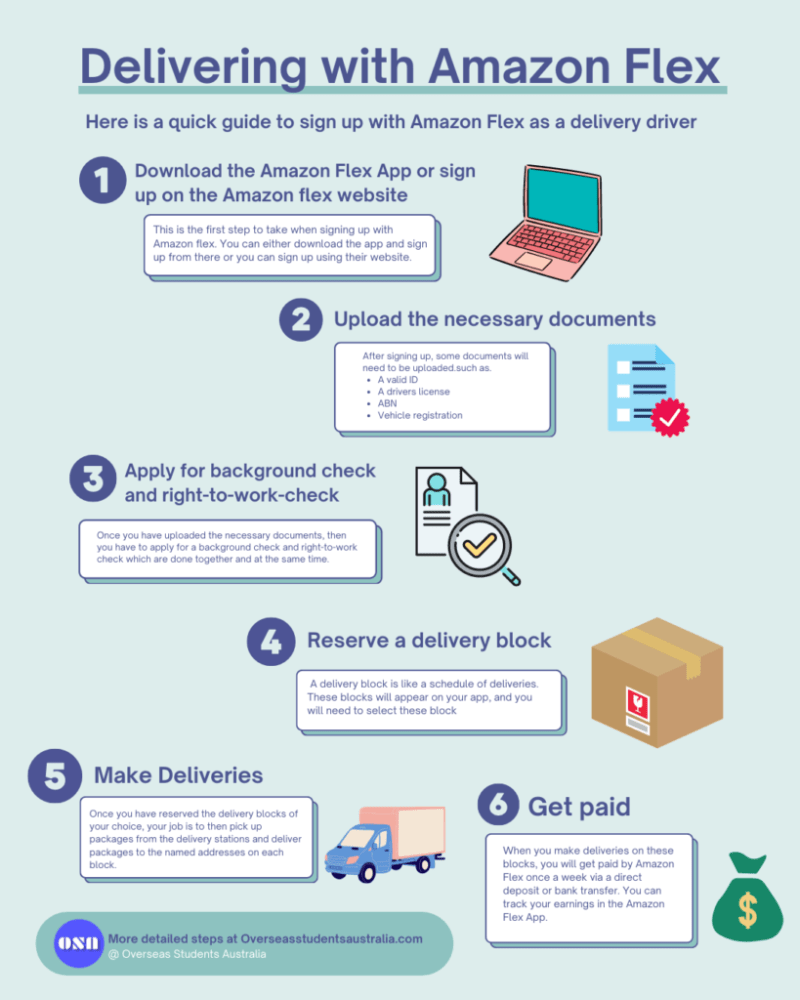Amazon driver Pay
 Amazon driver Pay
Amazon driver PayThe Impact of Algorithmic Wage Discrimination in Gig Economy: An Exploration
Amazon driver Pay – indopelita,.The gig economy, characterized by independent contractors and temporary positions, has seen a rapid increase in popularity over the past decade, becoming an integral part of today’s society. Companies like Uber and Amazon have capitalized on this trend, providing platforms for millions of workers to earn a living. However, recent research has shed light on a potentially troubling aspect of this sector: the use of Artificial Intelligence (AI) in wage determination.
A groundbreaking study conducted by Veena Dubal, a law professor at the University of California Hastings, has found that these companies may be using AI to offer different wages to people for the same job. This practice, known as “algorithmic wage discrimination,” could have profound implications for the future of work. The following article will delve into Professor Dubal’s research, exploring how AI is being used to shape the gig economy, and what this could mean for workers and industries worldwide.
The Concept of Algorithmic Wage Discrimination
Algorithmic wage discrimination is a novel concept that has surfaced with the proliferation of Artificial Intelligence (AI) in the workplace, particularly within the gig economy. Companies such as Amazon and Uber are at the forefront of this trend, utilizing vast datasets and sophisticated algorithms to determine wages for their contract workers.
These tech giants have access to an array of data points about their workers, including when they work, how long they work, and how much they’ve earned for previous jobs. Leveraging this data, they use AI algorithms to calculate an ‘optimal’ wage rate, ostensibly designed to motivate desired behaviors. For instance, a food delivery driver who tends to accept lower fares might be offered reduced rates by the algorithm, under the presumption that they are more likely to accept such jobs.
In effect, two workers performing the same job for the same duration could receive different wages based on the data-driven assumptions made by these AI systems. This practice of using AI to determine variable wages for the same work, often without the workers’ knowledge, is what Professor Dubal refers to as “algorithmic wage discrimination”. The implications of this practice are far-reaching and could redefine traditional notions of wage fairness and equality in the workplace.
The Research Study
Professor Veena Dubal undertook an exhaustive six-year research study to analyze the prevalence and impact of algorithmic wage discrimination within the gig economy. The study involved thousands of hours of interviews and observations with hundreds of Uber and Lyft drivers, many of whom work for multiple gig platforms.
The results of the study revealed that companies like Amazon and Uber possess a massive trove of data on their contract workers using their delivery or rideshare platforms. This data includes specifics like when they work, how long they work for, and what they earn for previous jobs. This information is then leveraged by the companies to compute the wage rate required to drive desired behavior from the workers.
Dubal referred to this practice as “algorithmic wage discrimination”, where workers get paid varying amounts for the same work done over the same time period. This finding, published in the Social Science Research Network in January, is also set to feature in the upcoming Columbia Law Review.
In her paper, Dubal pointed out instances where a food delivery driver is offered a lower fare than another because the AI algorithm predicts the first driver is more likely to accept the lower fare. Similarly, if a driver is known to work until they hit a specific daily figure, the algorithm might offer lower fares to get the driver to work longer.
Essentially, these companies are personalizing variable wages for individuals based on accumulated data about them collected over time, creating a system of wages that differs from person to person, even for identical jobs.
Real-Life Examples
The practical manifestation of algorithmic wage discrimination is apparent in numerous accounts shared by workers within the gig economy. Professor Dubal’s study illustrates this phenomenon with several examples from the experiences of Uber and Lyft drivers.
One case involved a food delivery driver who was offered a lower fare than his colleagues. The AI algorithm, utilizing its vast collection of data, predicted that this driver would be more likely to accept a lower fare. Such predictions are based on the driver’s past behavior and acceptance of similar low-paying jobs.
Another example concerns a driver who typically works until they reach a particular daily income target, say $100. According to Dubal, the algorithm might offer lower fares to such a driver, with the goal of extending their work hours. The underlying assumption is that the driver will continue working until they reach their target, regardless of the lower pay for individual jobs.
An Uber driver interviewed for the study, Domingo, recounted a specific instance where he took a short trip to unlock a $100 bonus one night. However, after completing that ride, he experienced a “downtime” of 45 minutes in a popular area before he could get another ride. He likened the experience to being at the mercy of a capricious and unseen entity. This sentiment was echoed by another rideshare driver, Ben, who described the variable pay system as akin to gambling, with the house (the company) always winning in the end. These stories illustrate the pervasive influence of AI-driven wage setting in the everyday lives of gig economy workers.
Company Responses
In response to Professor Dubal’s findings, representatives from both Uber and Amazon offered defenses of their respective wage-setting practices.
A spokesperson for Uber contested the premise of Dubal’s study, claiming that their upfront fare system does not adjust individual rates for individual drivers based on their willingness to accept lower fares. The spokesperson added that factors such as a driver’s race, ethnicity, promotional status, acceptance rate, total earnings, or previous trip history are not considered in calculating fares. They asserted that when an upfront fare is available, drivers see exactly what they will earn and where they are going before deciding whether the job is worth their time.
Amazon spokesperson, Simone Griffin, echoed a similar sentiment, highlighting the Amazon Flex program’s intent to provide individuals with an opportunity to schedule their own hours and be their own boss, with an average competitive earning surpassing $26 per scheduled hour. Griffin indicated that the majority of Amazon Flex delivery partners appreciate the program and take pride in the work they do on behalf of Amazon’s customers every day.
These company responses reflect a broader defense of AI usage in wage determination and operational efficiency. They suggest a different narrative, one that emphasizes flexibility and transparency for their workers, starkly contrasting with the algorithmic wage discrimination highlighted by Dubal’s research.
Broader Implications of AI Technology
The use of AI and algorithms in wage determination and employment practices is not confined to the gig economy; it has broader implications that could reshape many sectors of the workforce. AI’s potential influence extends beyond wage setting to other areas such as hiring, firing, scheduling, and productivity tracking.
In her paper, Dubal cited algorithmic wage discrimination as one of the reasons behind the California Labor Commission’s lawsuit against Uber and Lyft in 2020. The commission alleged that the companies owed drivers over $1.3 billion in compensation for their work hours. The case is still ongoing and symbolizes a broader concern about the implications of AI technology in the labor market.
As companies increasingly incorporate AI technology, Dubal warns of the possibility of algorithmic wage discrimination permeating corporate practices in other sectors, impacting more than just gig workers. These AI-based systems can potentially influence compensation in various industries, from healthcare to retail, creating a dynamic wage landscape driven by data and predictive algorithms.
In light of these potential implications, Dubal argues for a ban on the use of AI and algorithms in wage determination and urges federal lawmakers to scrutinize these practices more closely. The rapid evolution of AI technology underscores the urgency of addressing its potential risks and ensuring equitable wage practices across all sectors.
Potential Expansion of Algorithmic Wage Discrimination
The widespread use of AI in various industries could potentially expand the phenomenon of algorithmic wage discrimination. While gig economy companies such as Uber and Amazon were the focus of Professor Dubal’s study, her research suggests that the principles behind these practices could infiltrate other sectors.
In an increasingly data-driven world, companies in various industries may be tempted to use AI and algorithms to optimize their wage distribution. This could lead to the personalization of wages based on predictive behavior, regardless of the industry or the specific job.
Healthcare, retail, hospitality, and other sectors with large workforces might adopt similar practices to manage and incentivize their employees. The algorithms could analyze an individual’s work patterns, productivity, and previous responses to wage changes, thereby determining the optimal wage to get the desired output.
The potential expansion of algorithmic wage discrimination poses a significant concern, as it could disrupt traditional pay structures and potentially lead to income disparities and exploitation. With the increase of AI usage in the corporate world, the risk of algorithmic wage discrimination spreading to other sectors is becoming a real possibility. This expansion would affect a broader range of workers, highlighting the need for regulation and oversight to prevent potential abuses.
Recommendations and Conclusions
In light of her research findings and the potential broad implications of algorithmic wage discrimination, Professor Dubal makes several recommendations to mitigate these concerns.
Foremost among her suggestions is the need for a ban on using AI and algorithms in determining wages. Given the potential for exploitation and wage disparities, Dubal argues that it’s crucial to prevent this practice from becoming commonplace.
Furthermore, she calls for heightened scrutiny from federal lawmakers and regulators. This involves more than just focusing on the transparency and accuracy of automation technology in the workplace. Regulators should also evaluate the embedded social dangers within the logic of these algorithmic systems.
In her closing remarks, Dubal emphasizes the urgency of this issue. As AI technology becomes increasingly integrated into our everyday lives and the labor market, it’s essential to confront these potential issues head-on. By doing so, we can ensure fair compensation practices in the workplace and protect workers from the possible adverse effects of algorithmic wage discrimination.
The conclusion to be drawn from Dubal’s research is clear: while AI technology holds immense potential, it is not without its risks. As such, it is incumbent upon lawmakers, regulators, and society as a whole to ensure this technology is employed in a way that promotes fairness and equality.
Amazon.driver Pay – Premium Home Icon Chevron This represents an expandable section or menu or sometimes previous/next navigation options. Transportation
Amazon’s hike in driver wages could cut profits for the small businesses that make up its delivery network
Amazon.driver Pay

Twitter icon Stylized bird with open mouth chirping. Twitter LinkedIn icon The word “in”. LinkedIn Flipboard icon Stylized letter F. Flipboard Facebook icon Letter F. Facebook envelope icon. This indicates the option to send an email. Email link icon Picture of Ahelling. Symbolizes the link URL of a web page. Copy the link
Amazon Fresh Driver
Amazon’s delivery partners say it will become much harder to turn a profit and many could drop out of the game. CARLO ALLEGRI / Reuters
In late September, Amazon gave some of its delivery helpers a raise of $0.50 to $2.25 an hour, along with new benefits like education funding and a 401(k) program. The moves were part of a $450 million investment in the small companies that make up Amazon’s delivery network and employ drivers known as Delivery Service Partners.
When Amazon informed DSPs of the move at its annual Ignite Live conference in Las Vegas, the room cheered, according to two DSPs in attendance.
The salary increase was necessary, one DSP owner told Insider. “It’s getting harder to hire and be competitive with UPS and FedEx with what they give us,” the person said, noting that hiring costs have increased tenfold in the past year.
They Took A Stand Against Amazon For Their Drivers. They Say It Cost Them Their Businesses
But when Amazon’s more than 3,000 DSPs learned how their own pay would change as a result of the pay hike, some realized that their managers’ fortunes would improve, but theirs would worsen.
One DSP predicted an 18% drop in profitability next year as a result of the change. The second is estimated at 30%.
Insider spoke directly with three DSPs and saw comments from five more on screenshots of the private app Amazon uses to communicate with its contractors. Insider granted the DSP owners’ requests to remain anonymous because they are not authorized to speak about their experiences with Amazon, but Insider is aware of their identities.

When DSPs received the new rates from Amazon in September, some were quick to calculate that the pay would cover higher manager salaries, but few would cover the additional costs that come with them.
Amazon Will No Longer Use Tips To Pay Delivery Drivers’ Base Salaries
Overtime, payroll taxes, paid vacations, workers’ compensation – all of this goes with the employee’s hourly rate. According to DSPs who spoke to Insider and released the app in response to Amazon employees, the new payouts likely won’t cover what DSPs will receive.
At the time, Amazon planned to tie the raises to a new “scorecard” performance evaluation system for DSPs that determines their overall payout. The better they are in areas like safety and on-time delivery, the more they get paid to deliver.
“We are confident that with these latest changes, each of you will be able to meet and exceed the minimum wage requirement and remain within market profitability,” announced Alex Berry, Amazon’s director of product management for last mile delivery. DSPs said they would have to top up to cover the new costs and that changes coming into effect during the festive season would make this even more difficult.
DSPs backed off in the Ignite chat, and in response Amazon made two concessions. He made a one-off payment to DSPs to cover paid time off for employees, which had already been booked, as this cost would automatically increase with salary increases. And he moved some changes to the January results table after the crucial holiday season. The new minimum wage started in October, so DSPs are feeling it now.
Amazon Drivers To Receive $60 Million After Tips Were Withheld
An advisory group set up by Amazon to give DSPs a say in policy changes has not had a chance to voice its concerns or recommend changes. (Amazon employees confirmed this in screenshots of the app’s messages.)
“In fact, many of us share the same pains and concerns as we echo most of what we hear in the community,” announced DSP owner Albert Jacobs, who is part of the advisory group and was seconded by two members of the group. Jacobs did not respond to a request for additional comment.
In response to questions about executive and scorecard pay changes and communications with the board, Amazon spokeswoman Maria Boschetti said, “We work closely with our DSPs to ensure they have the tools and resources they need to grow their businesses successfully.” referring to an investment of 450 million dollars.

“They make it difficult to do business,” another DSP owner told Insider. We discovered a long time ago that we are not really their partners.
How Much Do Amazon Flex Drivers Make In 2023?
Moving some of the new scoreboard parameters into January could help DSPs get through the peak season. However, one DSP told Insider that he expects an exodus after business owners receive their employees with withholding tax in January. This is also the time when Amazon considers which DSPs to cut based on performance.
With retail orders slowing, the loss of DSP may not be an issue for Amazon any time soon. For DSPs, however, starting at the peak of inflation can be a tough pill to swallow, as costs are likely to be a large part of the profits they could take home.
“I know many who want to get out,” said one DSP. “We were really hoping it would be something we could do for the community — give people jobs. It’s not worth our stress.” Amazon is known for its efficiency and ease of shopping. With just a few taps, you can order an item from Amazon Prime and have it delivered to your door within days. Sometimes even hours.
The company even uses map tracking. Which allows customers to track their packages in real time as the delivery person continues his journey.
How Much Can You Make As A Delivery Driver With Amazon Flex?
While many Amazon users experience the company from its mobile app to their doorstep. Not as much is known about the people who deliver packages. A report published in June 2022 describes an increase in injuries to drivers of Amazon’s delivery partners. Lawsuits related to delivery companies have also been filed.
The national average wage for Amazon delivery workers is just over $43,207. That’s about $21 an hour. These estimates are generated by scanning databases of active jobs, ZipRecruiter says.
These wages can change depending on where the driver lives and works. Some cities like Atkinson, Nebraska earn up to $55,359 a year, while drivers in Manhattan, New York earn $49,401.

Amazon introduced Flex in 2015 because of the growing trend of professional drivers using their own cars, such as Uber, Lyft and DoorDash. Similarly, Amazon Flex allows drivers to use their vehicles to deliver packages.
Amazon Is Raising Pay And Adding Benefits For Some Delivery Drivers
Most Amazon Flex drivers make between $18 and $25 an hour, the company says. Depending on the state the driver lives in and how long it takes them to deliver. Amazon Flex drivers can also tip certain deliveries, which will increase earnings.
According to Amazon’s FAQ, Amazon Flex drivers are independent contractors and are not compensated for mileage, parking or tolls.
The average annual salary for an Amazon warehouse worker is $34,268, according to ZipRecruiter. In hourly wages, that’s just over $16 an hour. Most warehouse workers earn between $27,000 and $37,500. The new education program will fund participating delivery partners up to $5,250 per year per qualified driver to access more than 1,700 academic programs. And Amazon will contribute an additional $60 million to help DSPs match employee 401(k) contributions.
When we launched the Delivery Service Partner (DSP) program four years ago. We focused on creating a program that would give small business owners access to the tools and resources they need to build a successful delivery business. Along the way. We’ve worked closely with these owners and learned that the key to their success is helping them build empowered teams. To help DSPs continue to create the best workplaces around the world. We’re investing heavily and offering access to new best-in-class benefits from leading providers to help DSPs empower their leaders to grow and succeed in their careers. Including a new program college funding and a 401(k) plan.
Dc Attorney General Sues Amazon For Allegedly Misusing Driver Tips
Next Mile is our new education program that gives DSP participants up to $5,250 per qualified driver per year to access more than 1,700 academic programs, including bachelor’s and associate degrees. Skills certificates and baccalaureate courses. We’re also adding a leading benefits provider’s 401(k) plan to the services available to DSPs and offering DSPs an estimated $60 million over the next year to help these small businesses cover their employee contributions.
These new investments, along with the new DSP rate increase. Will add more than $450 million over the next year and help us empower these owners to be great employers and build great teams. With the addition of this new program offering. Amazon now supports participating DSPs to provide their drivers with education and career benefits, as well as financial planning
- Artificial Intelligence
- Wage Discrimination
- Gig Economy
- Uber
- Amazon
- AIin Workplace
- Future Of Work
- Algorithmic Bias
- Labor Rights
- AI Regulation









No Comments